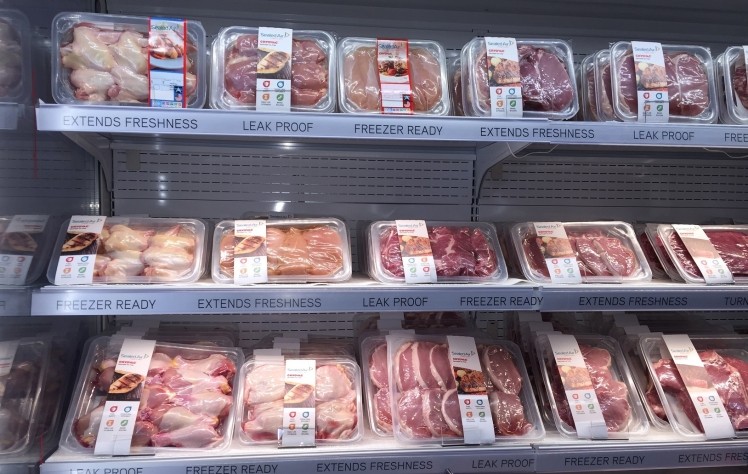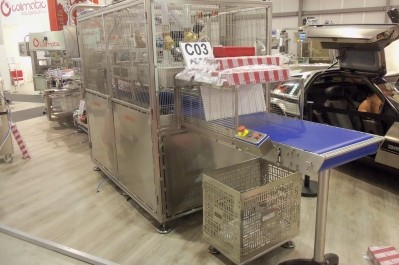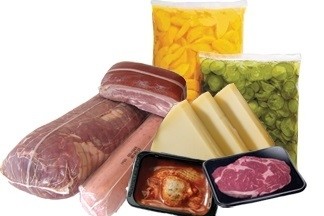Dispatches from IPPE 2015
Sealed Air gives the face of retail meat packaging a makeover

One such system is Sealed Air’s Darfresh vacuum skin packaging (VSP) platform. Darfresh packages typically have a clear film on the top surface and a shallow tray (which may be clear or opaque depending on customer specs) beneath the product.
Market development managers Sean Brady and Thomas Minucci told FoodProductionDaily that a growing number of their retailer customers are adopting vertical displays for fresh meat and poultry. Traditional polystyrene foam trays with an absorbent pad inside and plastic overwrap outside simply don’t work in a vertical format.
“Leakers are common with the foam tray / diaper / overwrap combination,” said Brady.
“Some grocers address that by keeping a roll of plastic bags next to the meat case so consumers can wrap a leaking package, but that’s just a temporary fix. Besides being messy, leakers tend to cross-contaminate other food items in the grocery bag or the refrigerator.”
Clear advantages
In contrast, vacuum skin packaging prevents leaks because it conforms to the product’s shape. By keeping oxygen out of the package, VSP extends product shelf life by about 5 days, Brady noted.
Another benefit of VSP is that the bottom tray is available in white or clear varieties. Minucci said Sealed Air’s consumer research has shown that 88% of the time, individuals preferred the clear package because they feel more confident in their selection when they can see the product.
The Darfresh line has built-in easy-open tabs in the corners of the package. Finished packages are stackable, freezer-ready and self-contained.
Consumer research also identified a feature that may be the result of a happy accident in design. The semi-rigid trays beneath the product are shallow, so consumers can marinate steaks or chicken parts right in the tray.
The trays are based on polypropylene, which recently reached the critical mass necessary for a material to be considered recyclable, Brady said.
Waste not
From a retailer’s perspective, the most important aspects of the Darfresh line are product protection and shelf life extension, Minucci noted.
“Food waste is a huge problem; about 35% of all the food sold in the US gets thrown away, often because of spoilage,” he said. “And, although some people think that we use too much plastic in this country, the carbon footprint of the plastic used to package a piece of meat only accounts for 3-5% of the total carbon footprint of the total product.”
The physical and microbial protection that packaging provides is especially important to retailers, Brady added, “Meat prices have risen a lot lately. Consider that the retailer loses about 12% shrink on a rib eye that is cut at the store and packaged in an overwrapped tray.”
“Then think about how much money the retailer loses on product that isn’t sold by its expiration date,” he added. “If you add a little bit more packaging – such as a bone cover that keeps a bone from breaking through the plastic – you can save that retailer a lot of money.”








